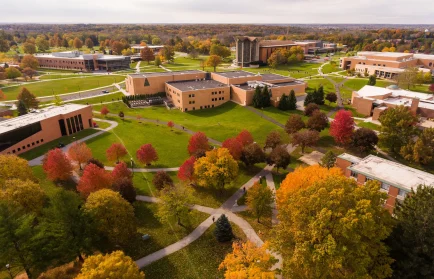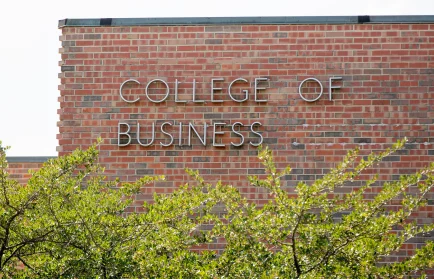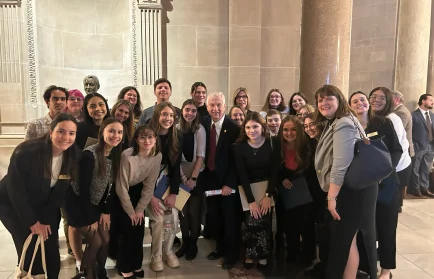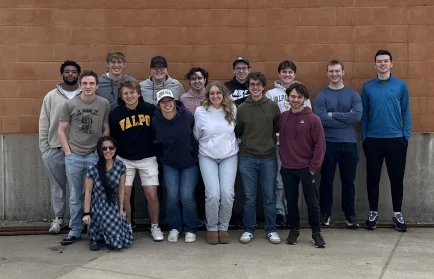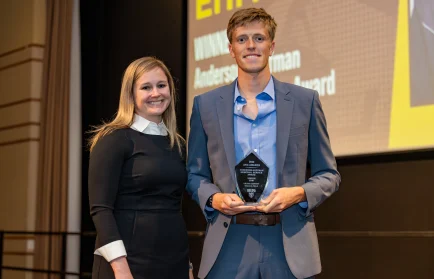Summer Teaching & Learning Fellowships
About Summer Teaching & Learning Fellowships
The Summer Teaching and Learning Fellowship program is designed to give financial assistance to faculty members for developing projects related to teaching and learning during the summer months.
The maximum award for the Summer Teaching and Learning Fellowship is $3,500. The Fellowship will be viewed as a stipend that will be paid in the form of a grant at the end of the preceding spring semester and will not be subject to retirement benefits. All or part of the money can also be used to cover research expenses such as travel, student aides, expendable supplies, and equipment. Those wishing to use the award to defray expenses must submit a tentative budget which will be subject to University approval. Those seeking Summer Teaching and Learning Fellowships are also eligible to apply for additional money for expenses through expense grants described elsewhere.
Possible projects could include, but are not limited to:
- Redesigning a course to include activities based on research in the science of learning
- Designing a Scholarship of Teaching and Learning project
- Developing a multi-course assessment tool
Applications for Summer Teaching and Learning Fellowships shall be submitted to the Office of the Provost. Generally, the deadline for the receipt of all supporting documents is the second week in February.
Summer Teaching and Learning Fellowships shall not be awarded for any project that in any way contributes toward the attainment of a degree. Preference may be given to those who have obtained supplemental funding for this project from outside resources. Faculty with 12-month appointments are eligible for Summer Teaching and Learning Fellowships, but only with the understanding that they will receive appropriate workload credits rather than a cash grant. The applicants must negotiate the availability of workload credit with their chair or dean prior to applying. The stipend, or portions of it, can be made available to the unit to enhance existing budgets or to defray expenses incurred in covering for workload credit. As indicated above, the stipend can also be used to cover teaching expenses.
A Summer Teaching and Learning Fellow shall file with the Office of the Provost a detailed report on his/her work, normally by October 1, following the summer for which the award was granted. A copy shall also be filed with the Summer Teaching and Learning Fellow’s department or college. If a subsequent application for a Summer Teaching and Learning Fellowship is made on the basis of the same project, a detailed progress report on the work done under the earlier award shall accompany the application.
| Year | Name | Title |
|---|---|---|
| 2024 | Selina Bartels | Designing CE298: European Infrastructure Systems |
| 2024 | Jay Grossman | Designing CE298: European Infrastructure Systems |
| 2024 | Margarita Rayzberg | Designing SOC 290: Science and Crime |
| 2023 | Benjamin Brobst-Renaud | Designing CVA 290: Art and AI |
| 2022 | Martin Buinicki | Designing ENGL 280: Writing RPGs |
| 2022 | Lucas Kelley | Redeveloping Public History Course and External Student Internships |
| 2020 | Shahin Nudehi, Mechanical Engineering and Bioengineering | Development of Mechatronics Minor for the College of Engineering at Valparaiso University |
| 2020 | Andrew Richter, Physics and Astronomy | Integrating Computational Approaches into the Physics and Astronomy Curriculum |
| 2019 | Mindy Capaldi, Mathematics and Statistics | Implementing Mastery-Based Grading in Mathematics Classes |
| 2019 | Melissa Desjarlais, Mathematics and Statistics | Redesigning MATH 314: Elements of Geometry |
| 2019 | Craig Goehler, Mechanical Engineering and Bioengineering | Reinvigorating Dynamics |
Applications must be submitted to the Office of the Provost by February 14, 2025*; awards will be announced and funds granted by early March 2025.
*For academic year 2024-2025, deadline information is currently tentative. Grants may be limited/cancelled due to budget restrictions.
I. Abstract
Please provide an abstract of 200 or fewer words.
II. Project Description
Project description (A–E) is not to exceed 10 typed, single-spaced pages.
It is understood that any academic teaching and learning proposal will employ the technical vocabulary of the applicant’s discipline. However, since proposals for Summer Teaching and Learning Fellowships are evaluated and approved or rejected by faculty members from a variety of disciplines, technical language often proves an obstacle rather than an aid to fair evaluation. Therefore, the Committee to Enhance Learning and Teaching requires that applicants, for funds to be awarded by the Committee, shall either (a) write their proposals in nonspecialist’s language, or (b) append to their proposals a restatement in nonspecialist’s terms of key sections, especially the abstract and the sections on purpose and significance. Thus, such a description should be sufficiently detailed but at the same time sufficiently nontechnical to give the reviewers, who may not have a specialized knowledge of the applicant’s discipline or teaching and learning issues within the discipline, a firm grasp of what the project is, how it will be carried out, and what it can be expected to accomplish. The description should be organized around the following points:
Purpose
Explain the objectives of the project, giving the basic ideas, problems, or questions to be examined, and indicate in a general way how these will be explored and developed.
Significance
- Indicate the contribution this project will make to the development of the applicant’s abilities both as a scholar/artist and as a teacher.
- Describe the contribution this project can be expected to make to the applicant’s field of study. If appropriate, mention both specific and technical contributions and also the more general significance of dealing with these particular ideas and problems.
- Comment on the significance of this project in the specific context of the Valparaiso University academic community, a community which has its own central objectives and values.
History
Describe the previous development, if any, of the project, its current state, stages yet to be completed, the plans for each stage, how the project is expected to improve teaching or student outcomes, and how the work proposed under this project fits into the whole. If appropriate, comment also on the relationship of the project to work already done by others in the field.
Plan of Work
Give a clear and detailed plan of work on this project, including the expected timetable of what is to be done, when, and where. An adequate description should be given to any special methods, procedures, and experiments to be employed.
Expected Results
Indicate as specifically as possible what results can reasonably be anticipated from this project. For example: Will certain hypotheses be validated or rejected? Will new material be brought to light? Will new methods be tested? Will the project result in public presentations, journal articles, or a book? An assessment plan should be included. It is expected that the applicant will review and evaluate the progress and success of the project on the basis of the Project Description both during the project and at its completion.
III. Curriculum Vitae
The curriculum vitae should be pedagogically oriented (such as, emphasize publications, presentations,and performances that are related to teaching and learning and include courses taught).
A few tips for preparing an effective vitae are:
- Prominently display your title or position along with your name.
- Date the document.
- Give your birth date, not your age.
- State your primary and secondary fields of specialization along with your position.
- List your professional positions in reverse chronological order.
- Use separate headings for books, published articles, and papers presented orally at international, national, regional, or statewide conferences.
- List the courses you have taught.
- Provide some evidence that you are a good teacher.
IV. Budget
Stipend
The funds for the Summer Teaching and Learning Fellowships ($3,500) can be received as a stipend or expenses or a combination of both.
Expenses
List any equipment or material needs and estimated cost. Even if all the funds are being used as a stipend, it is still important to provide a budget of expenses associated with the project, if any.
Travel
List any anticipated travel needs and estimated cost.
*All supporting grant application documentation must be uploaded as a PDF file using the online submission form.
